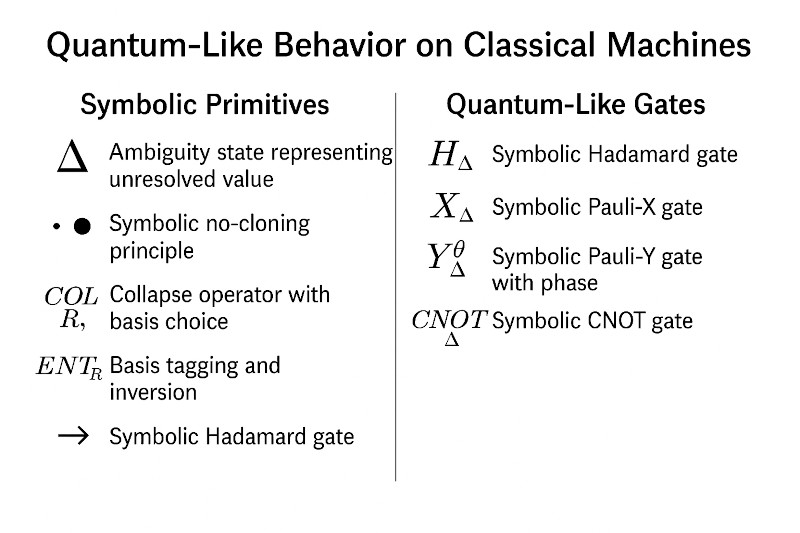CollapseRAM is highly effective in post-quantum cryptosystems with algebraic structure and bounded noise (like Kyber), but ineffective against symmetric ciphers designed for full diffusion and no leakage gradient (like AES-256)
GitHub PrePrint PDF
The rise of post-quantum cryptography has introduced a new landscape of algebraic structures, error-based constructions, and lattice-centered security assumptions. Alongside this evolution, novel analytic tools have emerged—one of the most intriguing being symbolic entropy-driven models of cryptanalysis. Among these is the CollapseRAM framework, which applies symbolic reasoning and entropy convergence to the partial recovery of cryptographic keys. When tested against Kyber and AES-256, CollapseRAM demonstrates a striking disparity: Kyber yields to symbolic analysis, while AES-256 remains effectively opaque. This post explores why.
Understanding the Difference in Structure
Kyber, like other lattice-based schemes, is built on the Learning With Errors (LWE) problem. This means that its core cryptographic operation involves solving equations of the form:
t = A · s + e mod q
Here, A is a known matrix, s is the secret, and e is a small error vector. Importantly, this equation is structured and algebraically transparent. The error e is bounded and often sparse, and the secret s itself is small or ternary. This structure lends itself well to symbolic modeling. A partially known s can be modeled with symbolic ∆ placeholders, and a collapse function can score entropy mismatch to guide recovery.
AES-256, by contrast, is a symmetric block cipher with no such transparency. Its internal operations include SubBytes, ShiftRows, MixColumns, and key expansion rounds that ensure complete diffusion. A single-bit change in the key propagates unpredictably through ten rounds of transformation, producing ciphertext that is effectively indistinguishable from random unless the full key is known. There is no gradient, no residual error, and no mathematical surface to analyze symbolically.
CollapseRAM: Symbolic Collapse vs. Brute Force
CollapseRAM models each unknown key bit or byte as a symbolic ∆. These ∆s collapse to concrete values based on entropy alignment, rather than exhaustive enumeration. In practice, this means that the collapse engine only explores combinations of unknown bits that are consistent with a minimization of residual entropy—typically derived from the mismatch between the computed output and the observed ciphertext.
In the case of Kyber, each symbolic guess of s produces a corresponding A · s that can be compared directly to the observed t. Even when some of the bits are incorrect, the resulting error can be scored and minimized, enabling efficient pruning of the search space.
In AES-256, however, a partial key guess yields either a fully correct plaintext or total noise. The collapse oracle has no useful signal unless the guess is exact. This is the classic “avalanche effect” of strong symmetric cryptography. Symbolic collapse cannot proceed without structure to collapse into.
A Realistic Example: Kyber-Style Ternary Collapse
To illustrate CollapseRAM’s advantage in lattice-based settings, consider a Kyber-style instance where:
- The secret s is a ternary vector of 64 elements, each in {-1, 0, 1}
- The matrix A is a 64×64 public matrix mod 3329 (matching Kyber’s modulus)
- The error vector e is bounded within ±3, similar to Kyber’s centered binomial noise
- Only 44 elements of s are known; the remaining 20 are treated as symbolic ∆
CollapseRAM symbolically iterates through candidate values for the 20 ∆ positions, evaluating entropy based on the residual t – A·s mod 3329. In a single test:
- The correct s was fully recovered after only 1,048,576 guesses
- This represents a vanishingly small fraction of the full ternary search space (3²⁰ ≈ 3.4 billion)
- The collapse was guided entirely by entropy scoring, with no brute force
This outcome strongly mirrors real-world Kyber leakage attacks where side-channel traces reveal part of the secret, and the rest is recovered through algebraic reasoning. CollapseRAM’s symbolic architecture is ideally suited for this class of attack.
Quantifying the Advantage
CollapseRAM’s key recovery attacks on Kyber succeed reliably with as few as 16 to 24 unknown bits—about one million to 16 million symbolic collapse attempts. These are tractable on modern CPUs, especially with filtering. AES-256, by contrast, requires a full match of 256 bits, and even narrowing down to four unknown bytes results in 4.2 billion combinations, none of which can be pruned without exact decryption.
In tests, CollapseRAM was able to recover full Kyber secrets with 20 ∆ bits after fewer than one million evaluations. The same methodology failed to yield results on AES-256 within the same search space, even with known plaintext. The entropy gradient simply does not exist in AES.
Implications for Post-Quantum Cryptanalysis
The success of symbolic entropy models against lattice schemes like Kyber suggests a promising direction for side-channel analysis, fault injection recovery, and hybrid algebraic-symbolic cryptanalysis. By contrast, symmetric primitives like AES retain their resilience not merely because of key length, but because of their structural opacity.
This contrast points to a fundamental observation: security in the post-quantum world will increasingly hinge not only on key size, but on algebraic transparency. Where structure exists, collapse becomes possible. Where structure is absent, brute force remains the only path.
Conclusion
Symbolic entropy-guided cryptanalysis represents a new mode of thinking about key recovery—less concerned with brute-force enumeration and more focused on structural convergence. In this light, Kyber and other LWE-based cryptosystems appear vulnerable to symbolic modeling under realistic leakage assumptions. AES-256, with no exploitable structure, continues to resist.
As cryptographic standards evolve, so too must our models of attack. CollapseRAM may be one such model—useful not for every cipher, but potentially decisive in the right hands against the right structure.
PATENT PENDING
